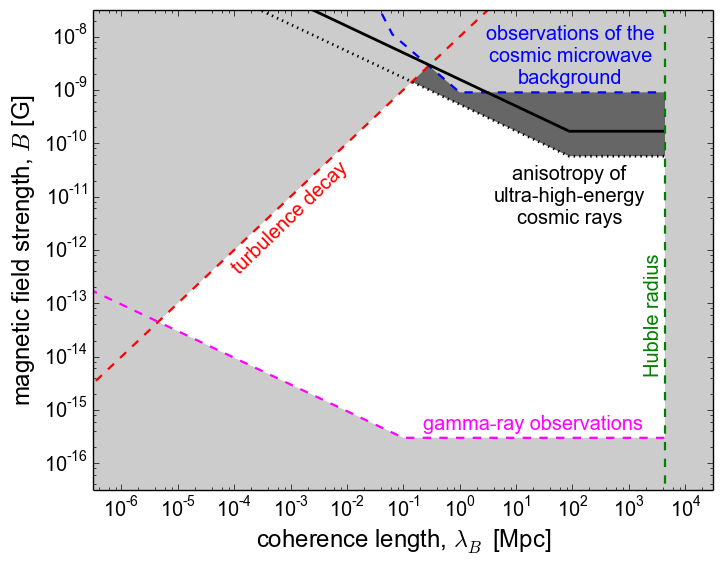| Description: | The compression and amplification of magnetic fields is a common paradigm in astrophysics wherever matter condenses under gravity, from star formation to the precipitation of the cosmic web. This process requires a seed field at the original, largest scale, now remaining pristine only in the vast voids in the large-scale structure of the universe. Limits on the strength and turbulence of this seed field have been established on a combination of theoretical and experimental grounds, probing primordial fields with observations of the cosmic microwave background, and fields in filaments by radio observations. Magnetic fields in voids, however, may also be probed directly, through their effects on high-energy charged particles that propagate through them. I will discuss some existing limits, based on the non-detection of gamma-ray cascades by Fermi and on the recent observation of cosmic-ray anisotropy by the Pierre Auger Observatory, and detail the further prospects from continuing studies of gamma rays and neutrinos.
The figure presents the parameter space for the strength and coherence length of the intergalactic magnetic field, showing regions excluded by past limits (light shaded) and new work (dark shaded). Theoretical constraints are set by magnetohydrodynamic turbulence, which causes the decay of short-scale structure, and by the Hubble radius, which places an upper limit to the size of any observable structure. An upper limit is set by observations of the cosmic microwave background, and a lower limit is set by the non-detection of gamma-ray cascades. The detection of anisotropy in the arrival directions of ultra-high-energy cosmic rays imposes a new limit (Bray & Scaife, submitted). The solid and dotted lines show the possible range of the limit, depending on the unknown composition of cosmic rays. |

